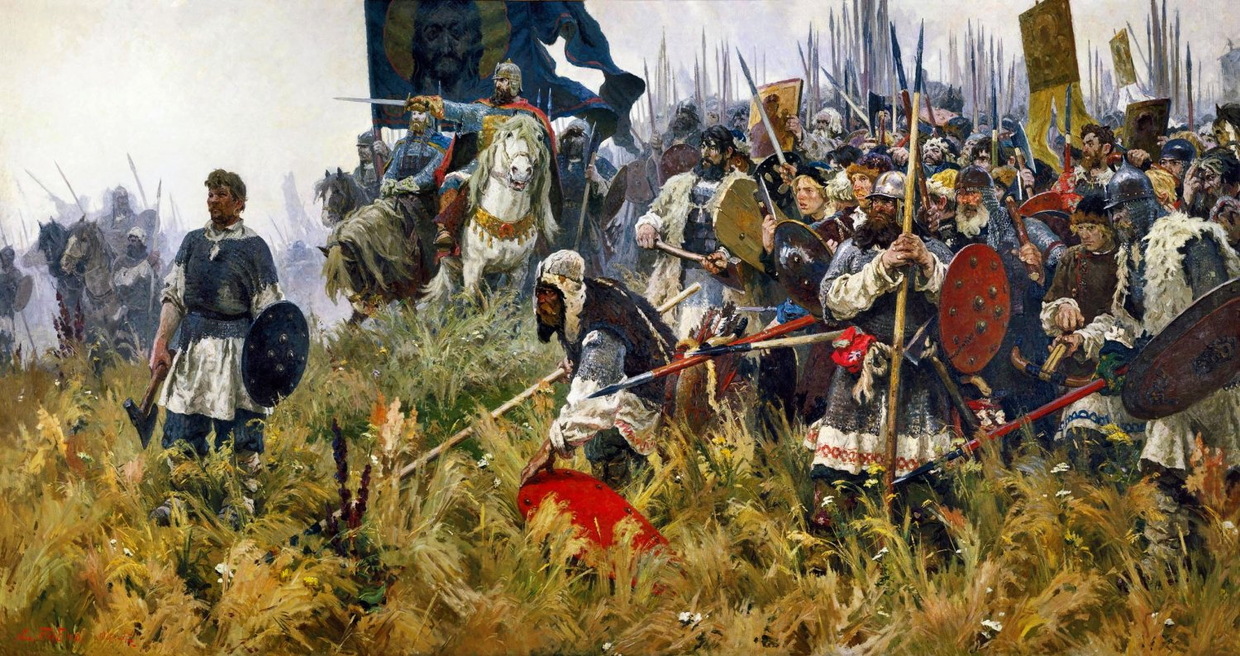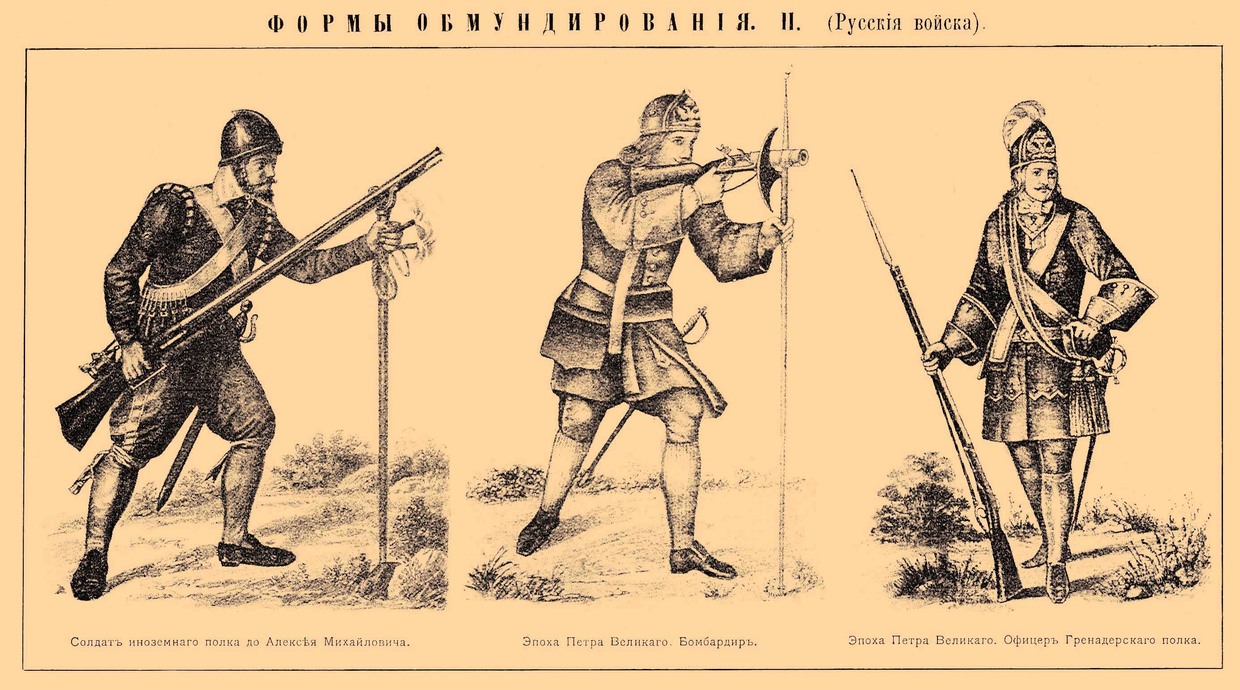From Vikings to PMCs: How Russia fought wars during its thousand year history

For over 100 years, Russia has celebrated Defender of the Fatherland Day on February 23. The holiday, which originally glorified the Red Army, took on wider meaning after the fall of the USSR. Presently, the holiday sees Russians celebrating all those who served in the military in defense of their country.
It is roughly equivalent to the American "Veteran's Day" or the British "Armed Forces Day."
The military has always been respected in Russia. But over the country’s thousand-year history, the system has undergone major changes.
Varangians: Strangers from the north
At the dawn of the existence of Rus, the Slavic tribes that populated the land that would become Russia had no army of their own. Whenever conflicts became violent, they resembled “wall on wall” fist fights. These confrontations continued in this manner until the Slavs learned the art of war from their northern neighbors and colonisers – the Varangians.
The Varangian guard, which took control of the trade route that passed through central Rus to the Greek civilizations, called themselves “rowers”, since they used row boats in their military campaigns. It is thought that the ancient Scandinavian word “rōþr” at some point evolved into the similar sounding “rus”. It’s highly likely that the future name of Russia thus sprang from the self-designated name of the Varangian warriors.
The people of Rus wore simple shirts and helmets. They were mainly armed with spears and axes, while a sword marked a warrior’s superior status. They fought on foot, moving along rivers on boats called drakkars, which were rolled over rapids. The Varangians engaged in the great viking tradition of trade and raids – pretty much the same as in Western Europe at the time.
One of the most famous Varangians and first rulers of Rus was Grand Prince Svyatoslav, who fought Bulgaria, the Byzantine Empire, and the Khazar khaganate. Some sources mention large raids as far away from the centre of Rus as the southern Caspian lands.

Boyars-Vigilantes: The first warriors in Rus
As the ancient Russian principalities were established, grew more powerful, and formed a settled economy, the Varangian-Rus people increasingly assimilated. In their turn, the Slavs adopted Varangian methods of warfare. This process, along with the need to protect the territories under their control, resulted in the formation of a new kind of military organization – the princely vigilante squad.
These were boyar warriors from among the prince’s loyal inner circle. They equipped themselves with war horses, armor, pikes, and swords at their own expense. In military campaigns, the unit was accompanied by a foot detachment of 200-300 spearmen. These combat groups were quite mobile and were able to quickly respond to the raids of the Polovtsians and Pechenegs. Unfortunately, by the time of the Mongol invasion, these detachments had not sufficiently evolved – still small in number and dispersed, they could not effectively fight the horde from the East.

Streltsy: The first permanent army
Despite the defeat by the Mongols, the vigilantes and local militias continued fighting during the internecine wars of the 14 and 15 centuries, until a single state was formed under Ivan the Terrible.
It was then that the first unified regular army appeared in Russia, called the Streltsy. This reform occurred in 1550 and a special order (ministry) was created. This first army wasn’t large – it consisted of no more than 3,000 soldiers. However, the Streltsy were paid and were not obliged to work the land, which greatly facilitated social mobility in those days. The privileges, allowance, and a rather free lifestyle made the new profession extremely popular, and within 50 years, there were over 20 thousand Streltsy in Moscow and the regions.
The Streltsy wore a kaftan and gloves and had uniform weapons. They were armed with a “bardishe” (poleaxe with a long shaft), a “pischal” (the Russian equivalent of an arquebus or long gun), and a saber. To achieve greater firing accuracy during important battles, the shaft of a bardishe was used to support the pischal. The Streltsy also often carried low-power powder grenades.
In addition to military duties, the Streltsy had civic duties, acting as policemen and firemen, They also often interacted with the local cavalry. In battle the Streltsy were directly responsible for the capture of Kazan (1552) and Astrakhan(1556), and most importantly, the retention of these territories.

Russia learns from the West
After the fall of the Rurik dynasty and the onset of the Smuta (The Time of Troubles), Russia was forced to adapt and change its military system because of the prolonged war with Poland and the occupation of Russia’s northern territories by Sweden. To fight the occupation, “foreign formation regiments” were organized. These military units were made up of servicemen, “willing” free people, foreigners, Cossacks, and other mercenaries.
The new regiments did not replace the Streltsy but used more modern tactics to fight. This included the placement of pikemen in front of the musketeers, which increased the tactical manoeuvrability of combat detachments.
By the 1630s, the foreign formation regiments had evolved into the first Hussar and Reiter companies. These were in fact knights with long pistols. They wore cuirasses and helmets, but when attacking, they fired dozens of heavy bullets at the enemy and then either retreated to reload or finished the enemy off with daggers and these meter-long pistols.

Peter the Great’s reforms – the first conscription army in Russia
Although the Hussar and Reiter regiments were quite effective, they still weren’t large enough. The Streltsy, who took on the role of a mass army, unfortunately engaged in a dispute with the young Tsar Peter I. The conflict prefaced large-scale military reform. In 1705, the future emperor and founder of the Russian Empire issued a decree “On the recruitment of soldiers from free people”. It was then that the term “recruit” was legally endorsed. Peter I “copied” this innovation from Sweden, which had a strong regular army.
The decree stated that from each village, town, community, and household, one person (except for the head of the family and the breadwinner) must be sent to the army for a lifetime of service and must become a soldier. This person was to be chosen by lot. In the early years of the law, all classes were subject to conscription. All nobles were obliged to serve in the army, and communities were required to regularly provide a certain number of recruits between the ages of 20-35.
In addition to the professional army, Peter I also established the Russian navy, military industry, and military academies.
By the end of Peter the Great’s reign, the regular army numbered 200,000 to 300,000 in all military service branches. This was an impressive number for a country with a population of 13 million. The duration of military service also became shorter over time. Lifetime military service was dispensed with, and soldiers went into “reserve”, being called to the army only in case of war. However, for many decades the duration of military service didn’t drop below 20 years.

The army of the Empire
The next major reform of the Russian army took place in the 19th century. Any defeat brings with it necessary lessons, and such was the case with the Crimean War, which resulted in Milyutin's sweeping reforms. The main innovation was the transition from Peter the Great’s recruitment system to universal military service – a standard practice in European armies. From that time on, all men between the ages of 21 and 40 were required to be on active military duty. In the ground forces, the duration of service was 15 years: six years of active service and nine years in reserve. After that, men were enlisted in the State Militia (the reserve of the armed forces, convened only in case of war) until they turned 40.
Additionally, instead of permanent armies and corps, Milyutin formed military districts with stationed units. This meant that soldiers and officers no longer had to permanently live in tents.
The second half of the 19th century was also marked by qualitative changes. Particular attention was paid to the army’s technical equipment. The end of the century saw the development of aeronautical and railway units. In 1885, a team of military aeronauts was formed (using hot air balloons or airships), with the East Siberian Field Aeronautical Battalion taking part in the Russo-Japanese War of 1904-1905. In 1911, the first aviation detachment appeared in Russia, and by the beginning of the First World War, there were 39 such groups. The famous “Ilya Muromets” heavy bombers also appeared at that time.
In those years, state-owned factories and logistics expanded, all combat units were equipped with machine guns, and telephone lines were installed between the various units.
Fundamental changes also concerned military service admission. The term of active service in the infantry and foot artillery was three years, in other branches of the ground forces it was four years, and in the Navy, it was five. Some categories of citizens were given privileges. Men who were unable to carry weapons for health reasons and some clergy were exempt from military service.

The Soviet Army
In the first months after the October Revolution of 1917, the Soviet government sought to create an army based on the militia system. This supposed that during peacetime, military units would consist only of the accounting apparatus and limited command staff, drawing upon locally registered fighters in times of need.
In the first months following the revolution, the army was composed of volunteers with the number of troops reaching just below 200 thousand. In order to create a regular army, the resolution "On the organization of the Red Army" was adopted on July 10, 1918. Men from 18 to 40 years old were subject to conscription and by November 1921, the Red Army numbered 5.5 million.

Nazi Germany’s invasion of the Soviet Union became a real test for the army, and the Soviet military system was not ready for it. Victory in the war cost the USSR the lives of tens of millions of people.
The conflict completely transformed Russia’s military system. In 1946, the Workers' and Peasants' Red Army was replaced by the Soviet Army. In the 1950s, the Armed Forces of the USSR were equipped with nuclear missiles and other advanced military equipment. The Soviet Armed Forces consisted of Ground Forces, Strategic Missile Forces, Air Defense Forces, the Navy, and the Air Force. This has all been inherited by the Russian Federation.

Present times
In Russia’s recent history, the army was at its largest in December 1991, when it numbered about 3.8 million servicemen. In 1992, Boris Yeltsin reduced the number of servicemen to 2.1 million in 1994 and by 1996, to 1.7 million.
At the end of August 2022, Vladimir Putin signed a decree increasing the personnel of the Armed Forces of the Russian Federation from 1.9 million to 2.04 million. This came into effect on January 1, 2023.
The Ukraine conflict has impacted Russian military service. Partial mobilization was announced for the first time in the history of the Russian Federation, and 300,000 people who had previously served in the army were called up. Moreover, private military companies became more prominent in light of the conflict.
Among these, the most widely known organization is “PMC Wagner Group” – currently one of the most effective units of the Russian military.





